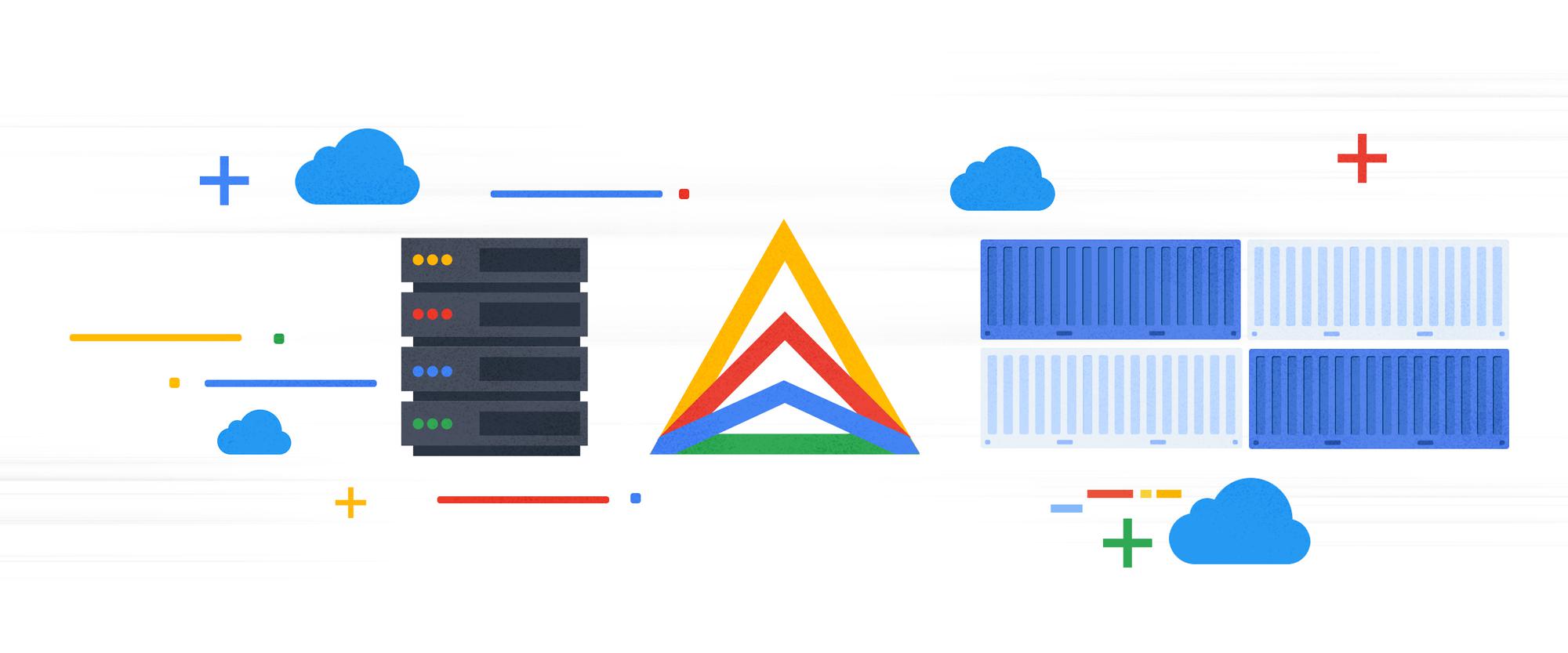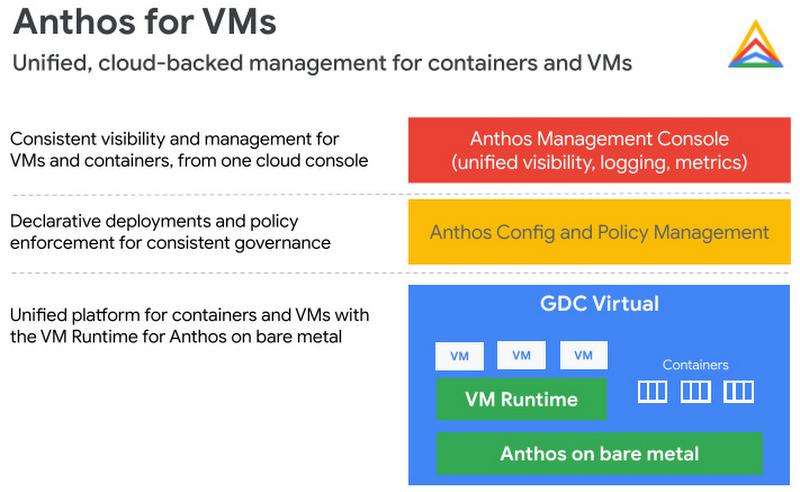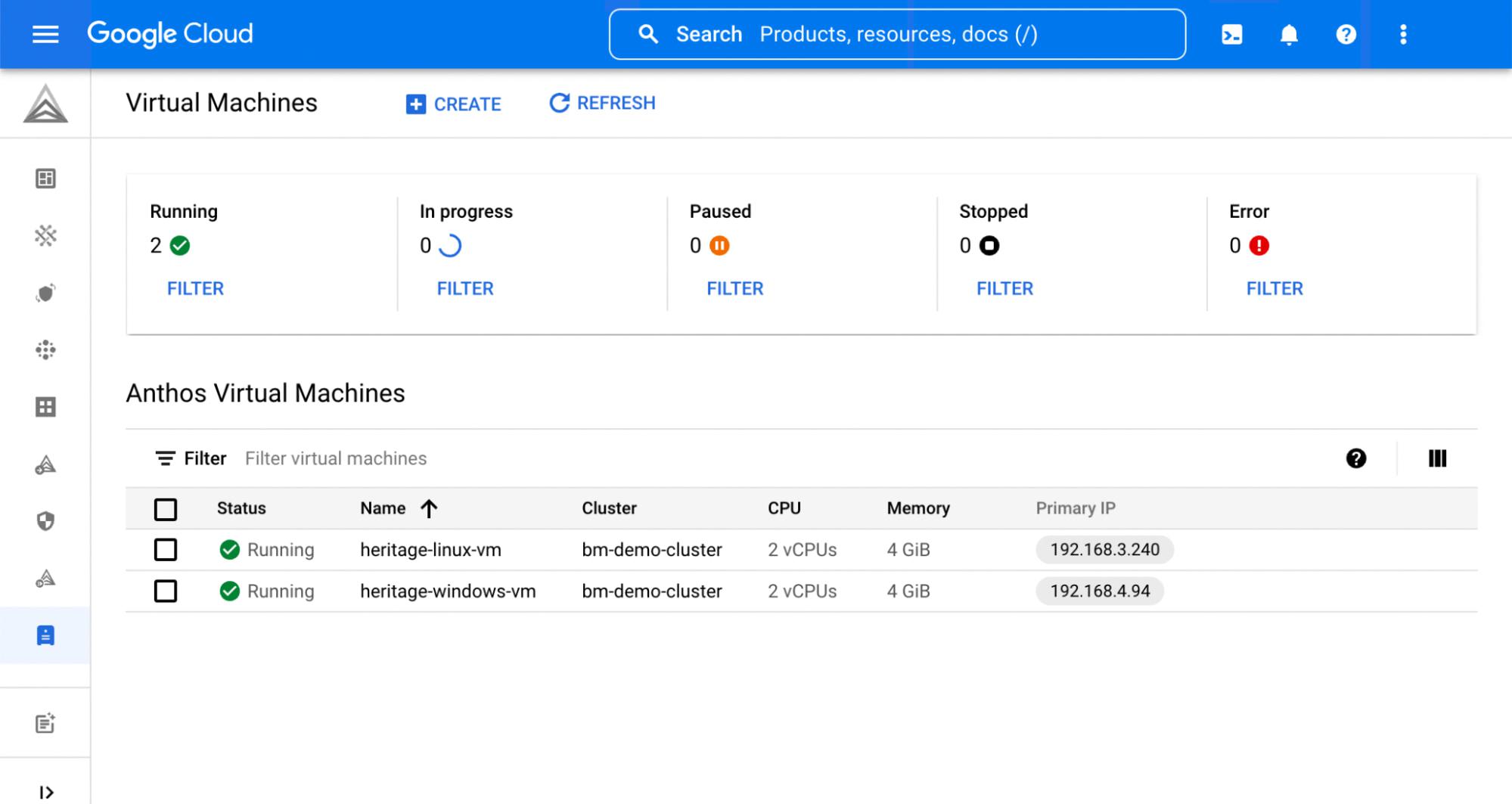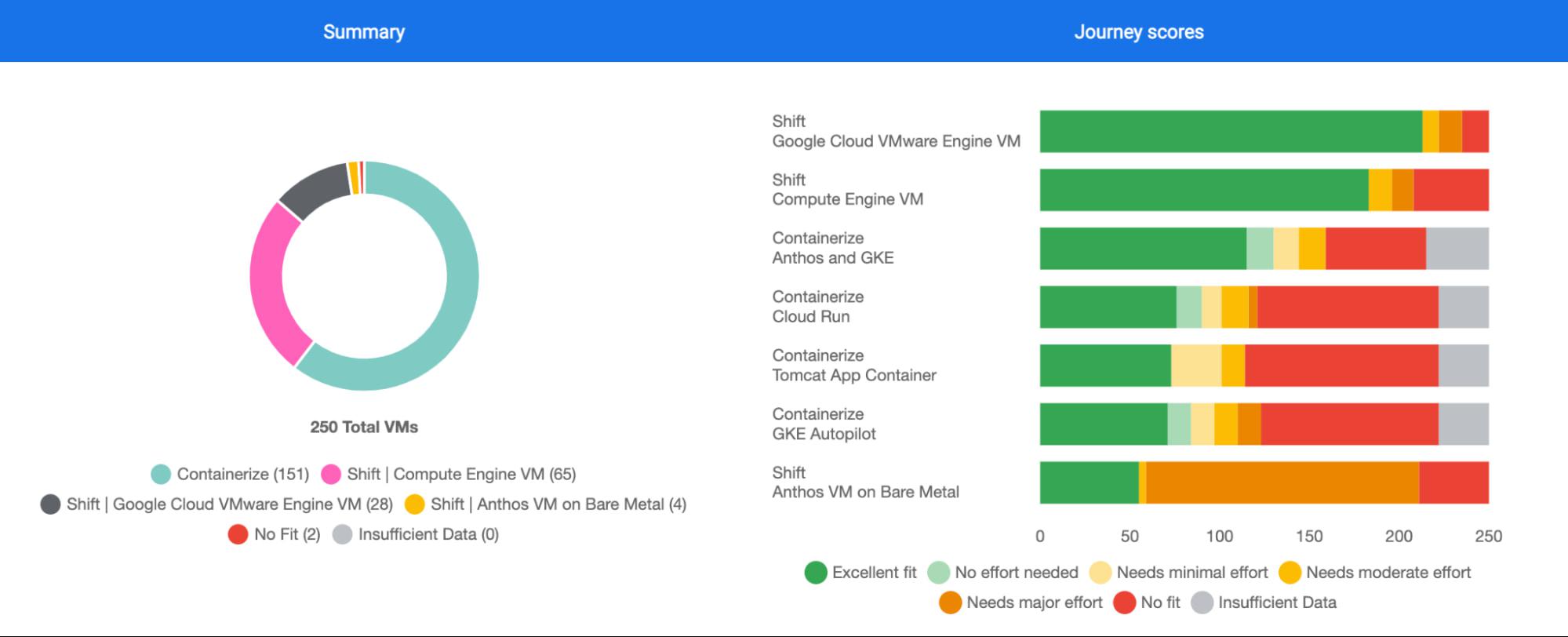We are pleased to announce general availability of virtual machine (VM) support in Anthos. VM support is available on Anthos for bare metal (now known as Google Distributed Cloud Virtual). Customers can now run VMs alongside containers on a single, unified, Google Cloud-connected platform in their data center or at the edge.
With VM support in Anthos, developers and operations teams can run VMs alongside containers on shared cloud-native infrastructure. VM support in Anthos lets you achieve consistent container and VM operations with Kubernetes-style declarative configuration and policy enforcement, self-service deployment, observability and monitoring, all from the familiar Google Cloud console, APIs, and command line interfaces. The Anthos VM runtime can be enabled on any Anthos on bare metal cluster (v1.12 or higher) at no additional charge.
From our partners:
During preview, we saw strong interest in VM support in Anthos for retail edge environments, where there is a small infrastructure footprint and a need to run new container apps and heritage VM apps on just a few hosts. In fact, a global Quick Service Restaurant (QSR), using a single VM of their existing point of sale solution, simulated throughput of more than 1,700 orders per hour for 10 hours, totalling more than 17,000 orders. The VM was running on the same hardware that exists at the store.
Why extend Anthos to manage VMs?
Many of our customers are modernizing their existing (heritage) applications using containers and Kubernetes. But few enterprise workloads are containerized today and millions of business-critical workloads still run in VMs. While many VMs can be modernized by migrating to VMs in Google Cloud or to containers on GKE or Anthos, many can’t — at least not right away.
You might depend on a vendor-provided app that hasn’t been updated to run in containers yet, need to keep a VM in a data center or edge location for low latency connectivity to other local apps or infrastructure, or you might not have the budget to containerize a custom-built app today. How can you include these VMs in your container and cloud app modernization strategy?
Run and manage VMs and containers side-by-side
At the heart of VM support in Anthos is the Anthos VM Runtime, which extends and enhances the open source KubeVirt technology. We integrated Kubevirt with Anthos on bare metal to simplify the install and upgrade experience. We’ve provided tools to manage VMs using the command line, APIs and the Google Cloud console. We’ve integrated VM observability logs and metrics with the Google Cloud operations suite, including out of the box dashboards and alerts.
We’ve included significant networking enhancements like support for multiple network interfaces for VMs and IP/MAC stickiness to enable VM mobility that is also compatible with Kubernetes pod (multi-NIC). And we’ve added VLAN integration while also enabling customers to apply L4 Kubernetes network policies for an on-premises, VPC-like, micro segmentation experience.
If you’re an experienced VM admin, you can take advantage of VM high availability, and simplified Kubernetes storage management for a familiar yet updated VM management experience. VM lifecycle management is built into the Google Cloud console for a simplified user experience that integrates with your existing Anthos and Google Cloud authentication and authorization frameworks.
Get started right away with new VM assessment and migration tools
How do you know if Anthos is the right technology for your VM workloads? Google Cloud offers assessment and migration tools to help you at every step of your VM modernization journey. Our updated fit assessment tool collects data about your existing VMware VMs and generates a detailed report. This no-cost report belongs to you and can be uploaded to the Google Cloud console for detailed visualization and historical views.
The report provides a fit score for every VM that estimates the effort required to containerize the VM and migrate it to Anthos or GKE as a container, or migrate it to Anthos as a VM. Once you’ve identified the best VMs to migrate, use our no-cost updated Migrate to Containers tool to migrate VMs to Anthos from the command line or the console.
Don’t let business-critical VM workloads or virtualization management investments keep you from realizing your cloud and container app modernization goals. Now you can include your heritage VMs in your on-premises managed container platform strategy. Please reach out for a complimentary fit assessment and let us help you breathe new life into your most important VMs.
To learn more about all the exciting innovations we’re adding to Anthos, mark your calendar and join us at Google Cloud Next ‘22.
By: Amr Abdelrazik (Product Manager, Anthos) and Dave Bartoletti (Outbound Product Manager)
Source: Google Cloud Blog
For enquiries, product placements, sponsorships, and collaborations, connect with us at [email protected]. We'd love to hear from you!
Our humans need coffee too! Your support is highly appreciated, thank you!











